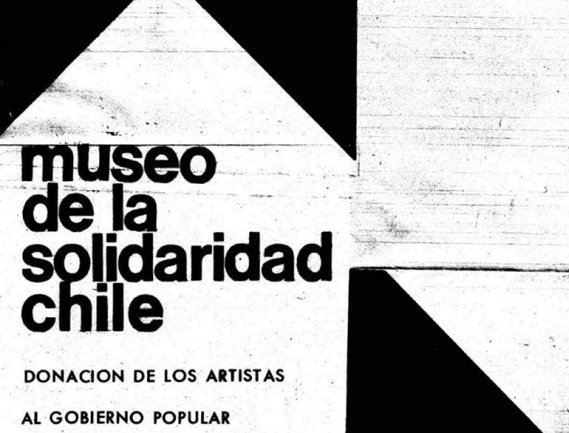Claudia Zaldivar
dal 12/5/2015 al 12/5/2015
Segnalato da
12/5/2015
Claudia Zaldivar
Museo Nacional Centro de Arte Reina Sofia, Madrid
The Museum of Solidarity is an exercise in institutional experimentation and a historical episode that is key to understanding the new maps and cultural networks that were alien to the centres of power during the Cold War.

The Museum of Solidarity is an exercise in institutional experimentation and a historical episode that is key to understanding the new maps and cultural networks that were alien to the centres of power during the Cold War. The origins of the Museum stem from Salvador Allende’s invitation to a group of intellectuals in 1971 to know about and report the changes developed by his government. Within this group, the Spanish critic José María Moreno Galván and the Italian writer Carlo Levi would put forward the foundation of a modern art museum in Santiago de Chile. Directed by an independent committee, chaired by Mario Pedrosa, and opened to a wide range of contributors, for instance Dore Ashton, Giulio Carlo Argan, Eduard de Wilde, Louis Aragon and Aldo Pellegrini, the museum would respond to a utopian gesture with a series of unique and incomparable characteristics.
Firstly, all the works were to come from donations by the same artists, who participated in an attempt to create a central institution in a “peripheral” and “underdeveloped” continent. The solidary between equals, or in the words of Pedrosa, “in the ethical, humanist and libertarian sense” would be the driving force behind a fledgling and unconventional international collection. Secondly, the Museum would place teaching at the centre of its reflections since it not only looked to incorporate, as Allende stated, “contemporary visual arts in the popular masses”during its unveiling, but also aimed to place the museum institution in charge of representing the imagination of a new social order; thus, from its conception the idea of the Museum of Solidarity was to represent another world that was, as Pedrosa put it, much bigger than itself, where everything is connected to everything.
After assembling a collection of unique pieces that included works by Sol LeWitt, Frank Stella, Jorge Oteiza, Eduardo Chillida, Joan Miró, Antonio Dias, David Alfaro Siqueiros and the Taller de Gráfica Popular, and even an attempt to move Guernica from New York to Santiago, the Museum of Solidarity was unveiled in 1972 before being dramatically closed down during the Military Coup in 1973. Following its international exile, the Museum has been recovered in its entirety in recent years. This conversation, conducted by its current director, Claudia Zaldívar, introduces its past and recent history, whilst also debating a model of cooperation and decisive utopia with which to consider art networks and exchanges from our present.
13 May, 2015 - 7 p.m. /
Sabatini Building, Auditorium
Museo Nacional Centro de Arte Reina Sofia
Santa Isabel, 52 Madrid



